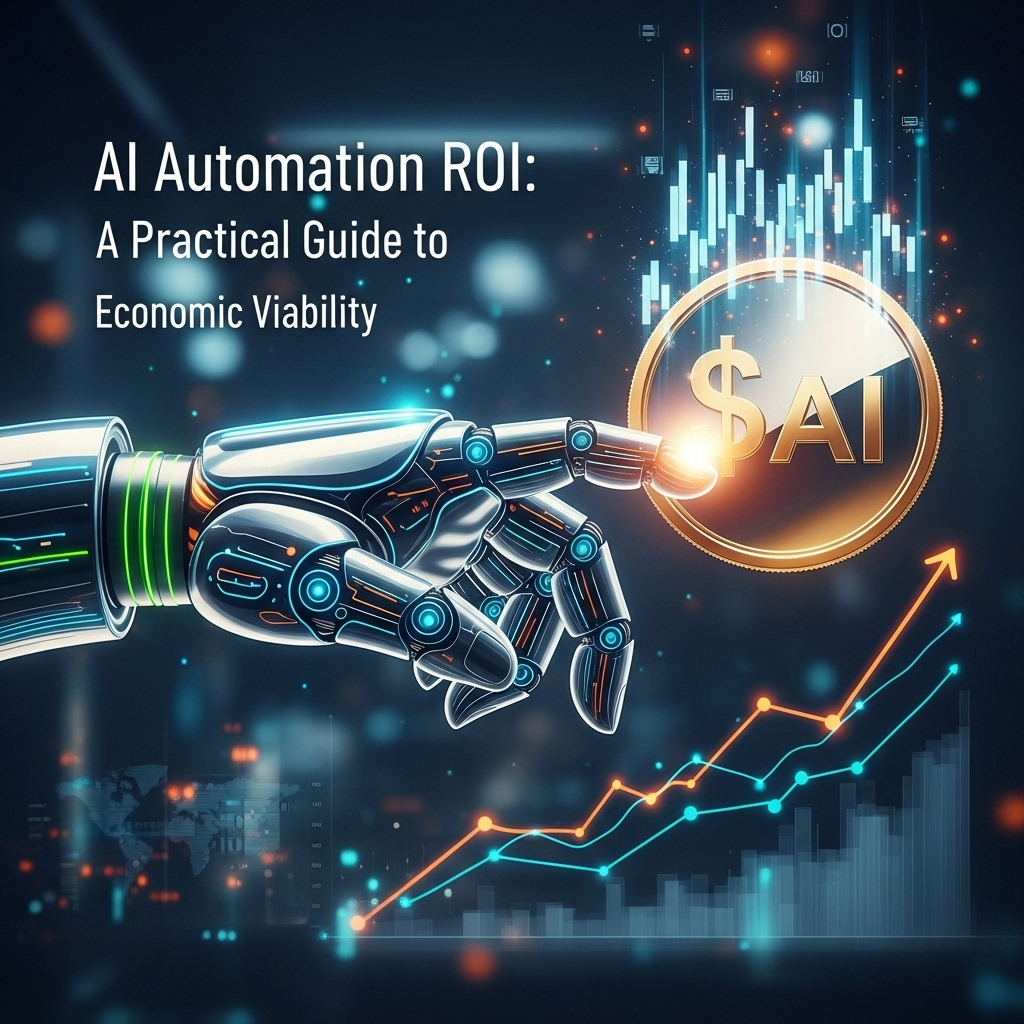
Understanding AI Automation ROI: Why It Matters
Artificial intelligence is transforming industries, but implementing it is a significant investment. Before diving in, it’s crucial for any business to ask: is it economically viable? This is where calculating the AI Automation ROI (Return on Investment) becomes essential. It’s a powerful metric that moves the conversation from hype to a tangible business case, ensuring your investment generates real value.
A clear ROI calculation helps justify the initial expenditure, sets clear expectations for success, and provides a benchmark for measuring the project’s performance over time. It is the foundation of a data-driven approach to technological adoption.
Step 1: Calculating the Total Cost of AI Implementation
A common mistake is underestimating the full scope of costs. To get an accurate picture, you need to account for everything from initial setup to ongoing operational expenses. A thorough cost analysis prevents budget overruns and provides a realistic baseline for your ROI calculation.
Direct vs. Indirect Costs
Your total cost of ownership includes more than just the software license. Consider these factors:
- Direct Costs: These are the upfront and clear-cut expenses. They include AI software subscriptions or licensing fees, required hardware upgrades (like servers or GPUs), and costs for specialized developers or implementation partners.
- Indirect Costs: These are ongoing or less obvious expenses. This category includes data management and storage, integration with existing systems (like your CRM or ERP), employee training programs, and long-term maintenance and support contracts.
Step 2: Identifying and Quantifying the Benefits
The benefits of AI automation can be both direct financial gains and more subtle operational improvements. A comprehensive evaluation looks at both hard and soft benefits to understand the full impact on your business.
Hard Benefits: Measurable Gains
Hard benefits are those you can easily assign a monetary value to. They are the most critical components of your ROI calculation.
- Cost Savings: This is often the primary driver. Calculate savings from reduced manual labor, decreased error rates, lower operational overhead, and optimized resource consumption.
- Revenue Growth: AI can also be a revenue driver. Consider increased sales from AI-powered lead generation, enhanced upselling opportunities, or the creation of new AI-driven products and services.
Soft Benefits: The Intangible Value
Soft benefits are harder to quantify but are vital for assessing the long-term, strategic value of AI. While you may not put an exact dollar figure on them, they should be a key part of your evaluation.
- Increased Productivity: Automating repetitive tasks frees up your employees to focus on more strategic, creative, and high-value work.
- Improved Customer Satisfaction: AI can power 24/7 customer support, personalized experiences, and faster response times, leading to higher customer loyalty.
- Enhanced Decision-Making: AI-driven analytics can provide deeper insights from your data, leading to more informed and effective business strategies.
Step 3: The AI Automation ROI Formula
Once you have a clear picture of your costs and benefits, you can calculate the ROI. The standard formula is straightforward:
ROI (%) = [ (Net Benefits – Total Cost of Investment) / Total Cost of Investment ] x 100
Net Benefits typically refers to the financial gains over a specific period (e.g., one year). A positive ROI indicates that the investment is profitable. This simple calculation is one of the most effective ways to present the business case to stakeholders.
Beyond the Numbers: Strategic Value and Long-Term Impact
While the ROI formula is critical, don’t ignore the long-term strategic implications of adopting AI. Implementing AI can provide a significant competitive advantage, improve your business’s scalability, and foster a culture of innovation. There are often challenges in measuring AI ROI, but considering these strategic factors alongside the hard numbers ensures you’re making a decision that benefits your business both now and in the future. By focusing on the right key metrics and strategies, you can ensure your AI automation initiatives deliver a powerful return.
Would you like to integrate AI efficiently into your business? Get expert help – Contact us.
